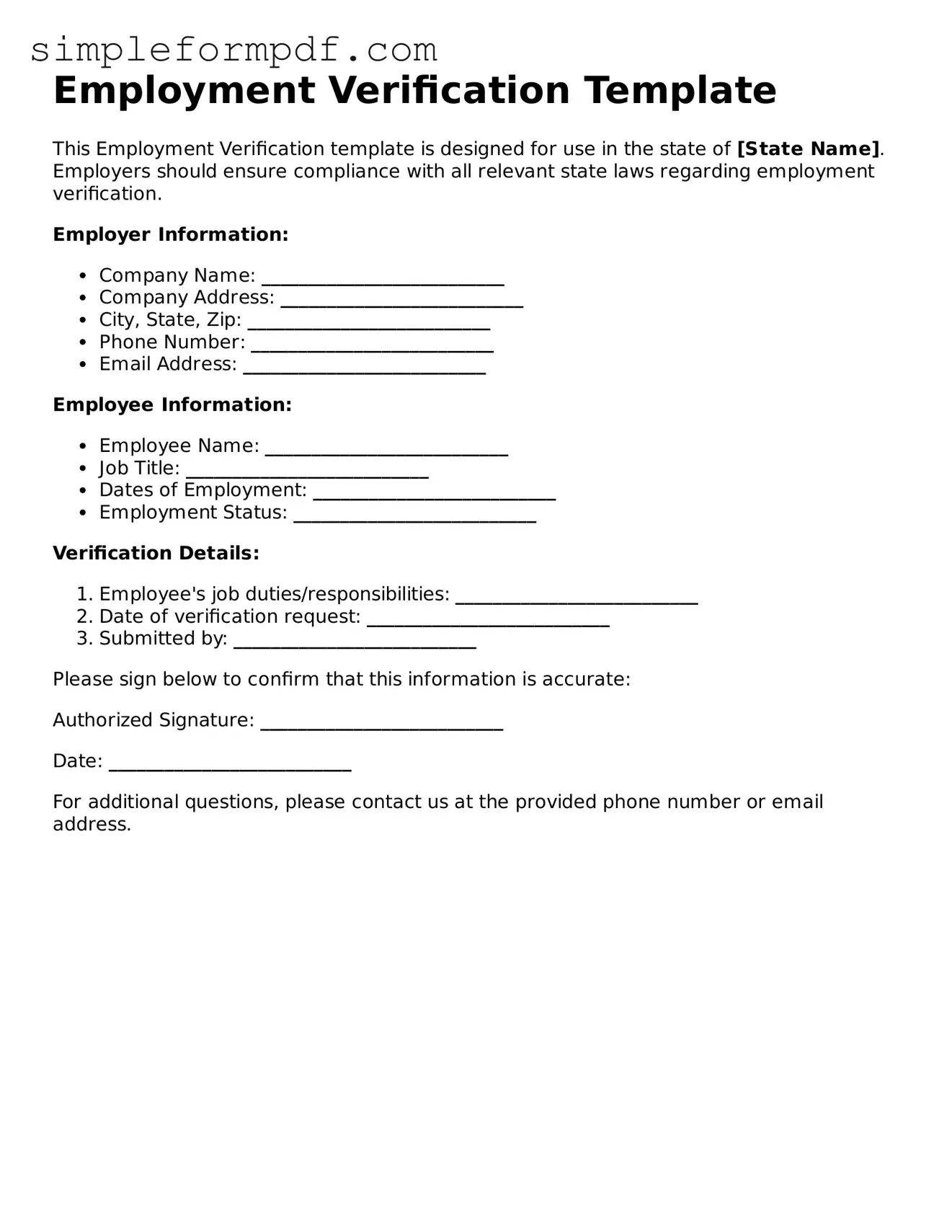Employment Verification Template
This Employment Verification template is designed for use in the state of [State Name]. Employers should ensure compliance with all relevant state laws regarding employment verification.
Employer Information:
- Company Name: __________________________
- Company Address: __________________________
- City, State, Zip: __________________________
- Phone Number: __________________________
- Email Address: __________________________
Employee Information:
- Employee Name: __________________________
- Job Title: __________________________
- Dates of Employment: __________________________
- Employment Status: __________________________
Verification Details:
- Employee's job duties/responsibilities: __________________________
- Date of verification request: __________________________
- Submitted by: __________________________
Please sign below to confirm that this information is accurate:
Authorized Signature: __________________________
Date: __________________________
For additional questions, please contact us at the provided phone number or email address.
